
The Giga Jul from Edelrid is the latest in a long line of belay devices under the Jul label. Starting with the very basic single rope sport Jul device, various superlatives have been added to the name as more technical devices were developed. The range is now exclusively assisted-braking only, hence the original Jul is no longer available. The Jul 2 is a single rope assisted braking device, the Mega Jul takes two ropes and has a sport climbing version as well, and the Micro Jul is the incredibly lightweight version of this for use with Edelrid's super-thin alpine ropes.
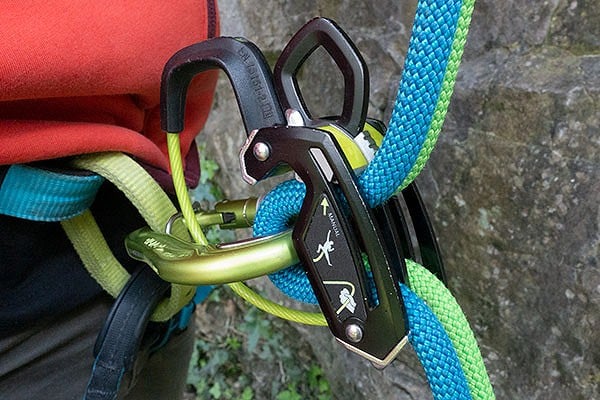
So where does the Giga Jul fit into the range? Well, for us, it fills a hole left in the range by the assisted-braking only policy adopted by Edelrid, and that is an assisted braking device with a conventional belay option built in. Being keen trad climbers we were keen to try this device out after first encountering it at the summer trade show of 2018 - you can see the film below. We got our hands on the Giga Jul late in 2018 and have been using it since, both indoors and out.
Basic geometry
Visually the Giga Jul is similar in size, or slightly bigger, to a lot of guide plates that are now available - but with a larger thumb loop. The main difference is the movable bar in the twin rope slots which enables you to switch between the two modes. In the brake assist mode, the large thumb loop is required for rope feed and braking for lowering.
As I've already implied, one of the main problems with brake assist belay devices is that you don't always want brake assist. This is particularly the case in trad climbing where having flexible control of the ropes independent of each other, and the ability to take in and pay out rapidly as your leader needs it, is crucial. The last thing you want is a rope locking when you don't want it to. So whilst brake assist devices have virtually taken over for most single rope sport climbing scenarios, hardly anyone uses them for trad climbing. This is despite devices like the Alpine Up from Climbing Technology and the earlier Mega Jul version being on the market for several years. These other two devices haven't been widely adopted in UK trad for different reasons so there is a gap here for something that gives the versatility of a manual belay device, with the option to have assisted brake mode if required, while still being a reasonable size and weight on your harness.
Handling
It is the versatility of this device that is its main appeal. Whether you are sport climbing, trad climbing, abseiling or using it as a guide plate, it needs to be used in different ways - but it is designed to work well for all of them. We have used it for sport climbing, trad climbing and abseiling, so those are the main areas we will focus on here. We haven't used it much in the alpine guide mode which isn't a common use in the UK - although we will look at that briefly in this review.
Sport Climbing with a Single Rope
Most usually this will be with the device in brake assist mode. This operates in the same way as the Mega Jul. Try and pull the rope through the device without holding the trailing rope and it will pretty much lock. This doesn't mean that you can belay without your brake hand but it does indicate how sensitive the locking system is. This makes paying out a two-handed procedure since you have to use the thumb loop to hold the back of the device upright to allow free feed of the rope. With a bit of practice this can be relatively easy but perhaps not as smooth as some single rope brake assist devices on the market. The design is also clever in that it ensures that you do always have your brake hand on the rope in the correct position. If you need to take in the rope if your leader is retreating, or has taken in too much slack for a clip, then you have to release the thumb loop to take in. Not a huge problem but there is a gap then as you slip your hand back up the rope into the thumb position.
There is a right way to thread the device depending on which mode you are in. This is well illustrated on the device itself. However, owing to the complex nature of the different modes, this is not totally straightforward to get right and takes a bit of getting used to. This poses the question - what happens if you thread it the wrong way when in brake assist mode? Well it still functions but it doesn't really offer any brake assist and taking in the rope is awkward since taking in is now where the brake assist is being applied.
The Giga Jul claims to work on ropes from 7.1mm to 10mm. We used it on a 9.8mm Sterling Velocity single rope, and an 8.5mm triple-rated Beal Opera Dry. Operation on the 9.8mm rope was smooth and it locked perfectly. On the thinner 8.5mm when used as a single, there was a little slippage when locking but nothing to raise concern. I doubt you would ever use it on a single rope much thinner than this and the 7.1mm rating is for double rope use. On stiff and furry indoor wall ropes it is sluggish and difficult to use but, let's face it, everything is!
So overall for sport climbing, operation is similar to a lot of devices on the market that give brake assist based on trapping the rope between the crab and the device. It is comparable to the Salewa Ergo, Mammut Smart, Black Diamond ATC Pilot type of device but not quite as smooth as the Climbing Technology Click-up. Those who prefer the camming style brake assist of the GriGri, CAMP Matik, Mad Rock Lifeguard, Edelrid Eddy etc would need to change their belay style since it is a different action.
Lowering off is achieved by locking the rope with the braking hand through the thumb loop and then tilting that gently upwards to release the grip tension. This is slightly tricky to get used to. An alternative method is to lower your braking hand on the trailing rope and then use your other upper hand to tip the device up to release. The advantage of doing it this way is that you can retain better control with your braking hand.
The Giga Jul works perfectly well for sport climbing in manual mode as well, which you might choose on long pitches to reduce drag to your leader, or for a particular redpoint where super fast rope feed was required for certain gripper-clips. This just illustrates the versatility of the device.
Trad Climbing with Double Ropes
For trad climbing with double ropes you are usually going to have it in manual mode. The switch between modes is simple - just slide the moveable bar on the device from one end to the other indicated by text and arrows on the device. Once in manual mode you basically have a standard belay device similar to many on the market. Because you have the device the other way up, the thumb loop is held out of the way upwards and two grooves come into play at the lower end of the device to aid with braking. Again this too has a right way and a wrong way indicated although it is far less crucial when in manual mode since it works pretty well either way, it is just that there are better braking grooves when threaded correctly.
It is also possible to double rope trad climb with the Giga Jul in brake assist mode. The only difficulty with this is subtle manipulation of the ropes independent of each other - so taking in with one rope and paying out with the other at the same time is almost impossible. For this reason you are rarely likely to use it when belaying a leader; however bringing up a second is a different matter. In this case you usually only take the rope in and having it on brake assist is actually a bonus, especially if your following climber needs a tight rope since you can do this easily without having to sustain tension with your brake hand.
We used it exclusively on a pair of 8.5mm Beal Opera ropes for double rope climbing. These fed well and gave good locking when required without being a total lock, including in brake assist mode.
Overall for trad climbing the Giga Jul in manual mode is as efficient as any device on the market. It is slightly bigger than some other devices and has the thumb loop which is redundant in the manual mode.
Abseil
For the most part, you would only ever abseil in manual mode. Once again this is very straightforward and operation is just like most standard twin rope belay devices. There is a right and a wrong way to thread the device but, as long as you are in manual mode, then both will work safely. You could abseil in brake assist mode, however it becomes very stiff and difficult to feed the rope through especially if you have a lot of rope weight dangling below. The only circumstances you might do this is if you were stripping a pitch of gear or getting in position for some photography but these are advanced techniques that would need some practice.
Guide mode
This is where you clip the device direct to a belay using the extra loop at the top of the device. Outside of a guided scenario it is not a common technique in the UK since it usually requires a high fixed belay which are rare in UK trad and there is relatively little UK multi-pitch sport. In the Alps though it is more common. The idea of guide mode is that it turns a conventional belay device into a brake assist device for bringing up climbers following a pitch - like a 'guide' would do - however the Giga Jul already has a brake assist mode so is it a slightly superfluous function of the device? We tried it out and discovered that guide mode only works in manual mode - the rope totally locks in brake assist mode. In manual mode though it works perfectly as any guide mode device would do and is probably slightly better than using the device set up for conventional brake assist if the fixed belay is high. If you are handling the device at waist level or lower then you would probably want to use a conventional brake assist mode direct from your harness.
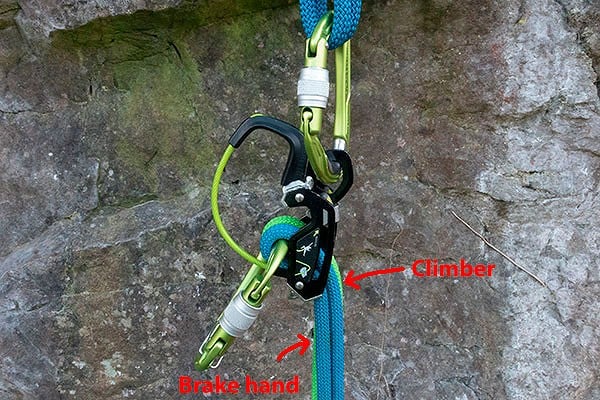
Summary
The Giga Jul is a brilliant and versatile device. It is slightly complex to use initially but you quickly get used to it with a little practice. The different modes give you plenty of options depending on the circumstances and this could be the one-stop-shop single belay device for all types of climbing you do from sport, through multi-pitch trad, to alpine. It is great to see Edelrid coming up with new devices that are not just fancy gizmos with a new feature or two that you may or may not appreciate, but real innovative developments that actually make climbing easier and safer.
Edelrid say:
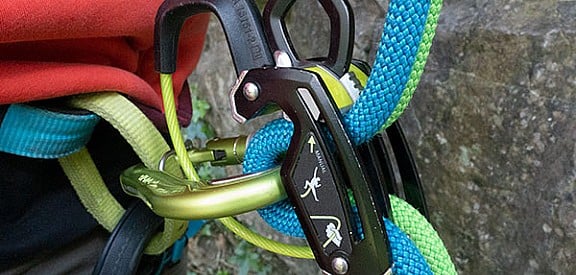
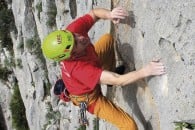

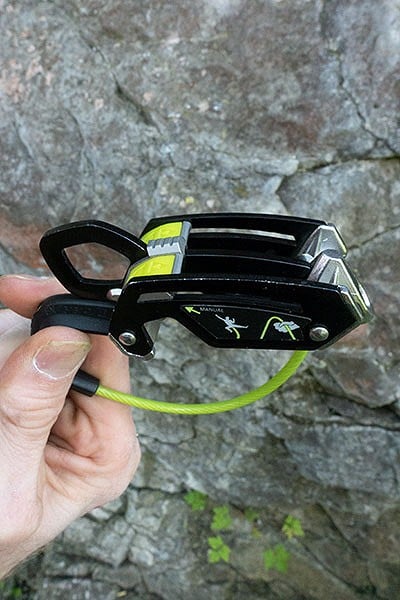
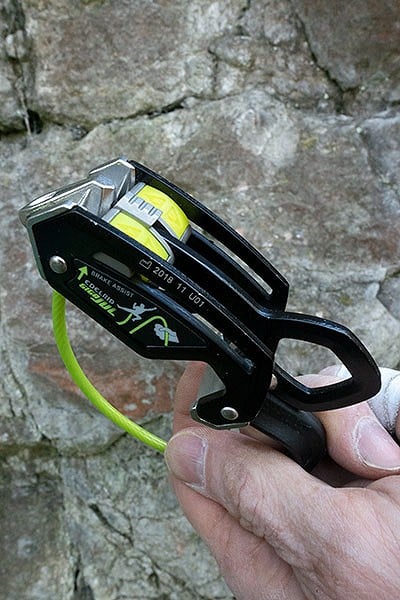
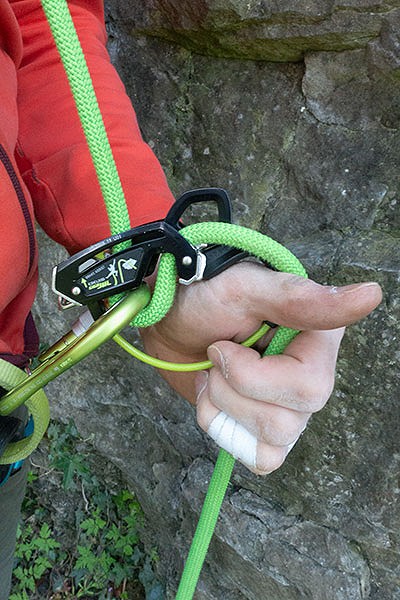
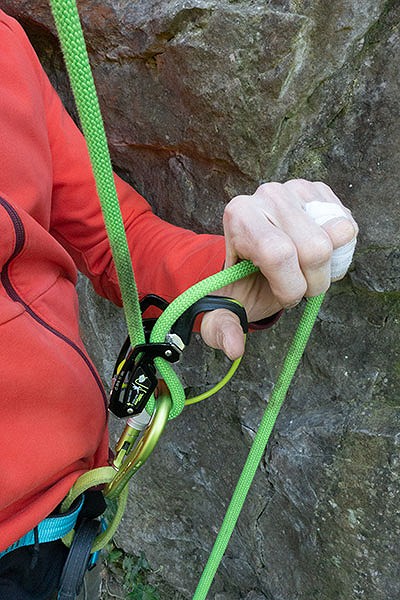
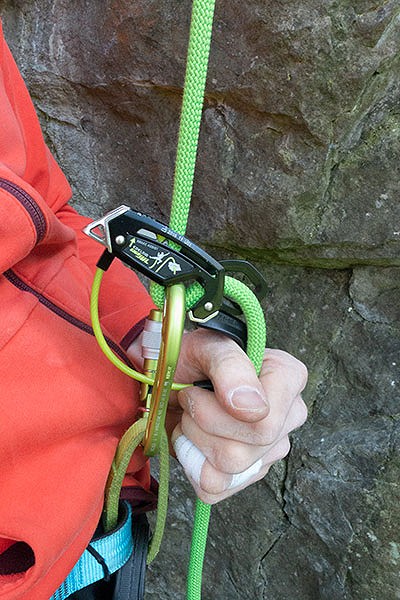
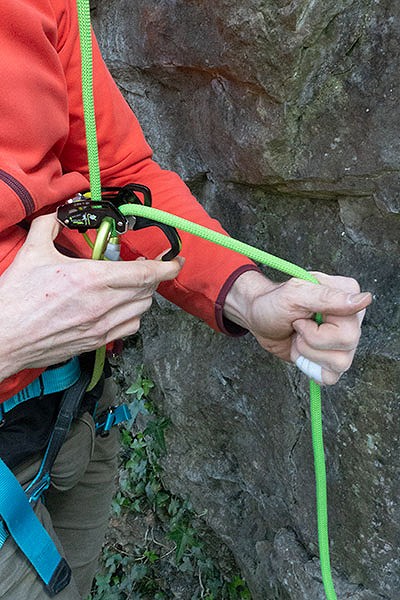
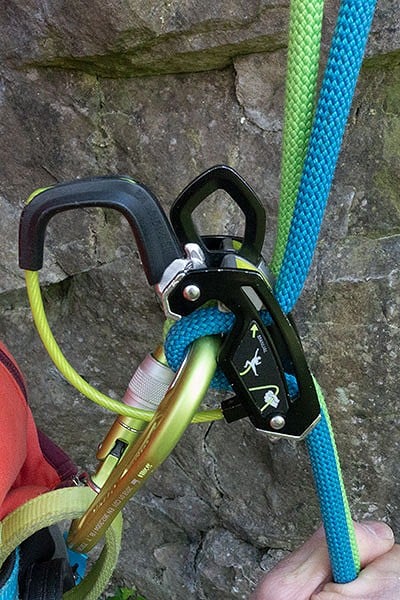
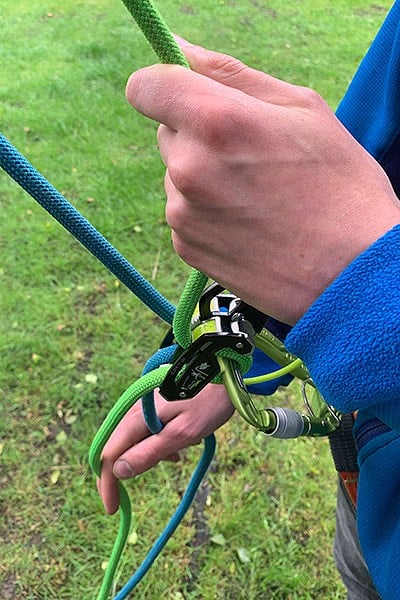
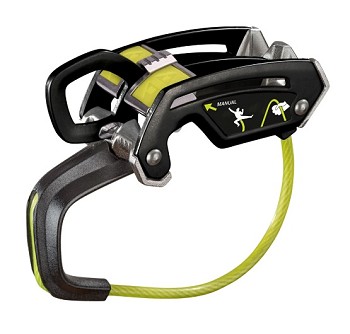
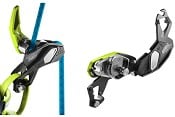
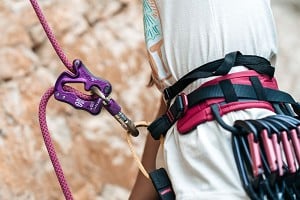

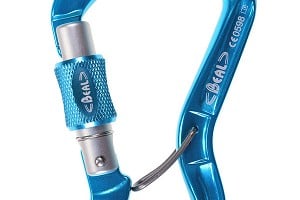
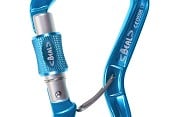
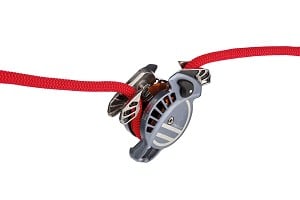
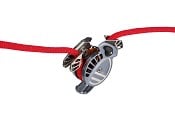
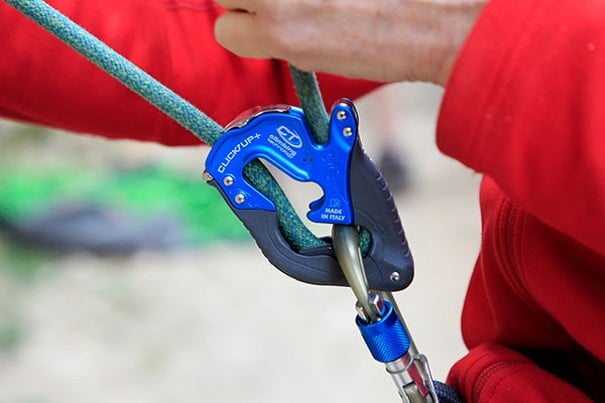
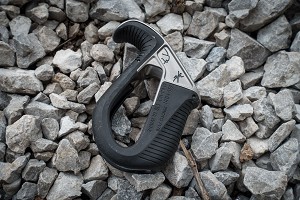
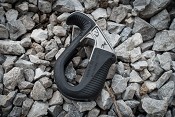


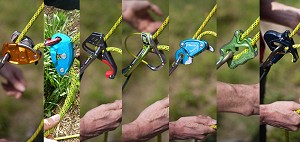

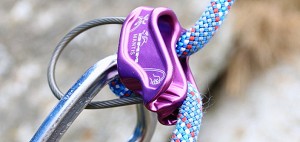

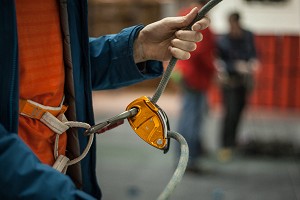

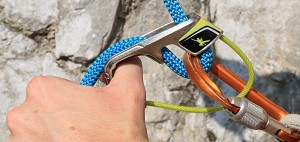

Comments
So it looks like they're fixed the problem with the megajul that you need to re-feed the ropes to switch between manual and guide mode - great. However, how binary is the locking in guide mode when you need to release the rope - is it like most other guide mode belay devices in being either locked or not, or can you do a more gradual release like the DMM Pivot?
There is nothing funnier than watching someone attempt to ab down the verdon gorge with one of them mega jul things. Take some sandwiches and popcorn, you are gonna be there a while.
As mentioned in the review, we didn't really test it that much in guide mode mainly because I haven't really found any need of guide mode in the climbing I have been doing. I discussed it with Edelrid though and they did comment that it locks up as most guide plates do and needs an extra crab to leverage the release. I have tried this in a simulated set up and it does function as expected although getting the extra crab into place is a little fiddly. I can't comment on whether this is similar to the DMM Pivot since I haven't got one of those to try.
Alan
I did use the Mega Jul and found it awkward for abseiling, particularly if you thread it the brake assist way. The Giga Jul is much better for this in fact it is as good as any standard tuber-style belay device on the market.
Alan
I guess there must be a lot of people at the Verdon who don't know what they're doing then which sounds kinda of terrifying! I've done the majority of my climbing for the last 5 years I guess now with a Mega Jul, including lots of abseiling. You can ab the normal way with a prussik if you want but the locking mode with an additional krab as a handle works great. Perfect for abbing to remove gear for example.
https://www.ukclimbing.com/gear/climbing/belays/edelrid_mega_jul-6739